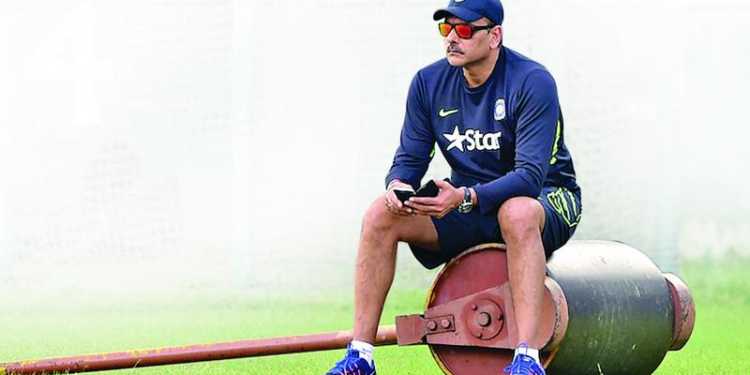India salvaged some pride by winning the final test match against South Africa and did manage to silence some of their critics. However, a lot more was expected from the World No.1 Test side going into the tour.
India got plenty of flak for its performance in the ongoing test series and were labelled as home track bullies. On the contrary, in this era of cricket hardly any team has performed well overseas. South Africa too were battered when they visited India last time. However, if anyone could break the trend it was India.
Team India were undone by some shocking decisions and the man at the thick of the things was none other than coach Ravi Shastri. Let’s take a look at some of his (and Kohli’s) shocking decisions.
1. Picking Rohit Sharma on the basis of ‘current form’
The burden of India’s batting relied mainly on Pujara, Kohli and Rahane. The shocking decision to drop Rahane, India’s best overseas player, for Rohit created unprecedented pressure on Pujara and Kohli as the rest of the Indian batting failed to turn up. Rohit was selected on the basis of ‘current form.’ Yes, Rohit was sublime against Sri Lanka but it’s one thing to face Suranga Lakmal and Co. in your own backyard and it’s a completely different cup of tea to face the likes of Rabada, Steyn, Philander etc. on seaming tracks. the decision to select Rohit Sharma is akin to selecting someone for racing in F1 on the basis of his track record in the virtual game Need for Speed.
Rahane showed his class and temperament in the Third Test at the Wandered is perhaps the most testing conditions. His quick fire 48 on a pitch which is being termed as dangerous for batsmen got India back into the game and enabled India to set a target of 241 on a track which has received flak from everywhere. Rohit Sharma who before the second test had an average of under 10 in South Africa never really looked comfortable against the pace attack of South Africa. After Virat Kohli’s dismissal on the second innings of the third test, Rahane anchored the Indian innings something India badly needed especially in the second test when Virat Kohli was on 150 and needed some support from the other end. India had chances to win the first two tests but couldn’t capitalize on them thanks to some poor batting, maybe just maybe, India might have had been in the series if Rahane was played from the beginning.
2. The dropping of Bhuvneshwar Kumar for the Second Test: –
Bhuvneshwar Kumar impressed with both the bat and the ball in the first test and nearly won the first test for India. His skills with the new ball troubled the South African batsmen however it was his skills with the bat that grabbed eyeballs. His 99-run partnership with Pandya in the first innings and 49 run partnership with Ashwin gave India hope and proved that he is more than capable of doing a holding job. Shockingly, he was dropped for the second test to accommodate Ishant Sharma who missed the first test due to illness. The track at Newlands might have suited Ishant more due to his ability extract extra bounce from the pitch given his height but his inclusion in the team shouldn’t have come at the expense of Bhuvneshwar. Perhaps, Bumrah should have been dropped. Not only did India miss Bhuvneshwar’s skills with the new ball, his batting ability was also sorely missed when Virat Kohli was batting superbly in the first innings and badly needed someone to do a holding job at the opposite end. His inclusion in the team for the third test had an immediate impact as South Africa were bundled out for 194. Bhuvneshwar excelled yet again with the bat in both the innings, scooping up the Man of the Match award, especially in the second innings after Rahane’s dismissal, making the decision to drop Bhuvi for the second test all the more bizarre.
3. India’s off-field decisions: –
India were doomed to fail right from the moment they boarded the plane to South Africa. The decision to cancel the sole warm-up game in favour of training did the visitors in. No amount of training in the nets can simulate how the conditions would be in the middle. Yes, the BCCI erred in scheduling the India-Sri Lanka series right before India’s tour to South Africa which led to the cancellation of the boxing day test between India and South Africa. However, with Kohli away for his wedding, the team management led by Ravi Shastri could have decided to send test players like Vijay, Rahul, Saha etc to South Africa beforehand. Those who were not playing ODIs and T20Is in India, they should have been sent to South Africa. They should have practised there, played for a local side. Ravi Shastri defended his decision saying that who would manage the players sent to South Africa early? BCCI with all its riches would certainly have been able to find a team manager. Also, this has been done in the past. While Virender Sehwag was smashing the West Indian bowlers in an ODI Indore for his 219, some players left for Australia early while the rest of the squad joined the touring party after completing the ODI series. No touring side has ever won a series without playing a single practice match.
Virat Kohli was reprimanded and charged 25% of his match fee for breaching the code of conduct during the second test. Virat Kohli was unhappy that his side was made to play for a very short session of play in between intermittent rains which allowed South Africa to have some breathing space as the pitch had very little for the bowlers during the rains. Kohli hence decided to give the match referee an earful in his office which resulted in him being reprimanded and given a demerit point.Kohli was lucky to escape with a fine. Barring Kohli hardly any Indian batsman has stood up to the South African bowlers and if he was to be banned for the final test, all hell would have broken loose.
Virat Kohli the batsman escaped unscathed from the tour however, Virat Kohli, the captain certainly didn’t. His disruptive selections and horses for courses strategy fell flat on his face. Ravi Shastri was nothing but a mute bystander increasingly becoming a liability. Kohli has still a lot to learn when it comes to captaincy, something which he himself accepts. Shastri has been reduced to nothing but a ‘yes man’ to captain Kohli.
Kohli’s aggression needs to be kept in check as what might work for Kohli might not for the rest of the team. Shastri doesn’t compliment Kohli as he is also quite aggressive. Ganguly was also an aggressive captain but the team had a calming presence in the form of coach John Wright.
Take the example of Pujara, who didn’t live up to the expectations on this tour. Kohli back in 2016, questioned Pujara for his strike rate which resulted in Pujara being out of the test side for a brief period of time. However, Kumble stepped in and made Kohli realise the importance of a player like Pujara in the team. Since then, Pujara has nothing but a revelation for India.Kohli has been screaming his lungs out for his batsmen to show some intent on the pitch and that has certainly affected Pujara. Pujara transformed himself into a monk at Newlands and his concentration hardly wavered in the first innings. India scored only 48 runs in the session but only one wicket was lost, leaving the South African bowlers frustrated.However, the first ball after lunch, Pujara played a shot so uncharacteristic of him, getting him out and starting the collapse of the Indian batting. Perhaps the pressure of intent got the better of Pujara and this time there was no Kumble to save him.
In a worrying sign, reminiscent of the spat between Kohli and Kumble, the coach and the captain once again are not on the same page. Shastri was confident of his team adapting to the conditions and didn’t feel the need to have a practice match when the team arrived in South Africa. He quickly changed his tunes after India found themselves 2-0 down and was of the opinion that India needed more time to prepare for the tour something which captain Kohli didn’t agree to.Kohli is still adamant that it was the fault of his batsmen and not the scheduling for the loss.
The performance of India in the last test match is a testament to the fact that India grew into the series and perhaps with some practice games and extra days of preparation, the result would have been skewed in India’s favour.


































